Formant shifting is a vocal processing technique that manipulates the formant frequencies of audio signals to alter the perceived pitch of vocals, without changing the actual pitch.
This powerful tool helps you modify the tonal quality and character of vocals to fit any genre or style you’re working with.
So, as a music producer, it’s important to know all about formant shifting to enhance your tracks.
As well as achieve professional-quality, show-stopping vocals and stand out in the competitive landscape of music production.
In today’s article, we’ll break down:
- What formant shifting is ✓
- Music theory and frequency fundamentals ✓
- Differences between pitch and formant shifting ✓
- How the human vocal tract and formants works ✓
- Pitch correction and formant shifting techniques ✓
- Top formant shifting plugins ✓
- Professional tips, tricks & techniques for creative vocal processing ✓
- Integrating pitch shifting for enhanced sounds ✓
- Combining formant shifting with other effects ✓
- Much more about formants, formant shifting, etc. ✓
You’ll be able to apply this technique creatively and technically in your music productions.
Plus, manipulate vocals with precision, explore new soundscapes, and produce tracks like a true professional.
Whether you want to subtly enhance the natural qualities of a vocal performance or transform it into something entirely new, mastering formant shifting is key.
It will elevate your production skills to new heights.
So, let’s dive in…
Table of Contents
What is Formant Shifting?
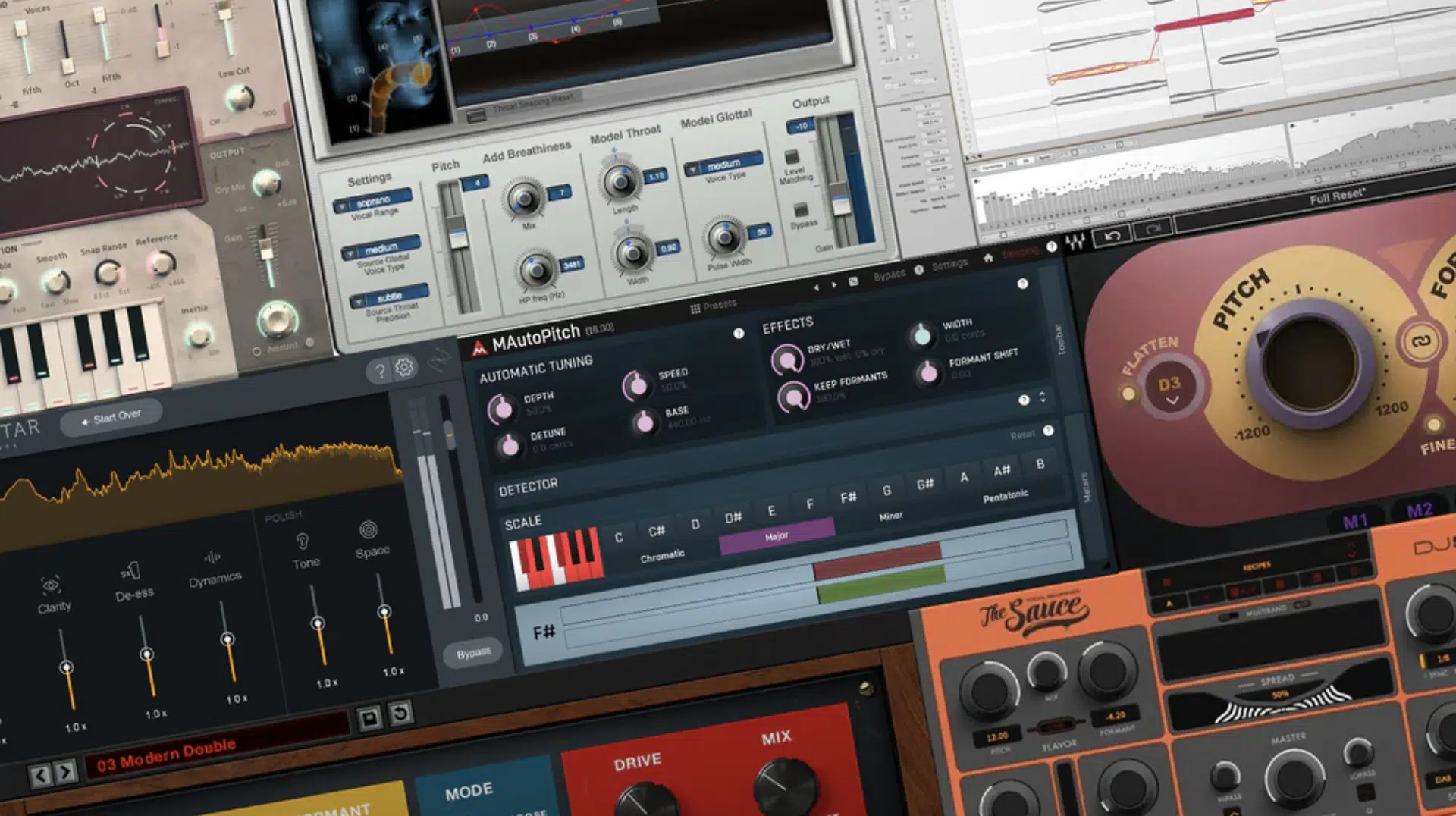
Formant shifting is the process of altering the frequency bands that shape the character of a voice; changing the vocal timbre without affecting the pitch.
This technology allows you to shift/alter the character and timbre of a voice, making it sound higher or lower while the actual pitch remains unchanged.
It’s a powerful tool for creative vocal processing and producing unique soundscapes.
Formant shifting adjusts the vocal tract’s resonances, which are responsible for the distinct sounds of vowels and certain consonants in sung or spoken vocals.
By changing these formant frequencies, you can make a male voice sound more feminine or a female voice more masculine.
Or, even create surreal vocal effects that don’t resemble a human voice at all (which we all know and love).
This versatility makes formant shifting a super beneficial technique.
It plays a crucial role in vocal tuning 一 creating more natural-sounding pitch correction.
When combined with pitch shifting, formant shifting ensures that the vocals sit perfectly in the mix without losing their natural tonal qualities.
As such, mastering formant shifting is key to producing music that resonates with listeners and stands out in today’s competitive landscape.
The Difference Between Pitch and Formant Shifting
Pitch shifting and formant shifting, while often used in tandem when it comes to vocal processing, cater to distinctly different aspects of sound manipulation. Let’s break it down so you get a better understanding.
-
Pitch Shifting
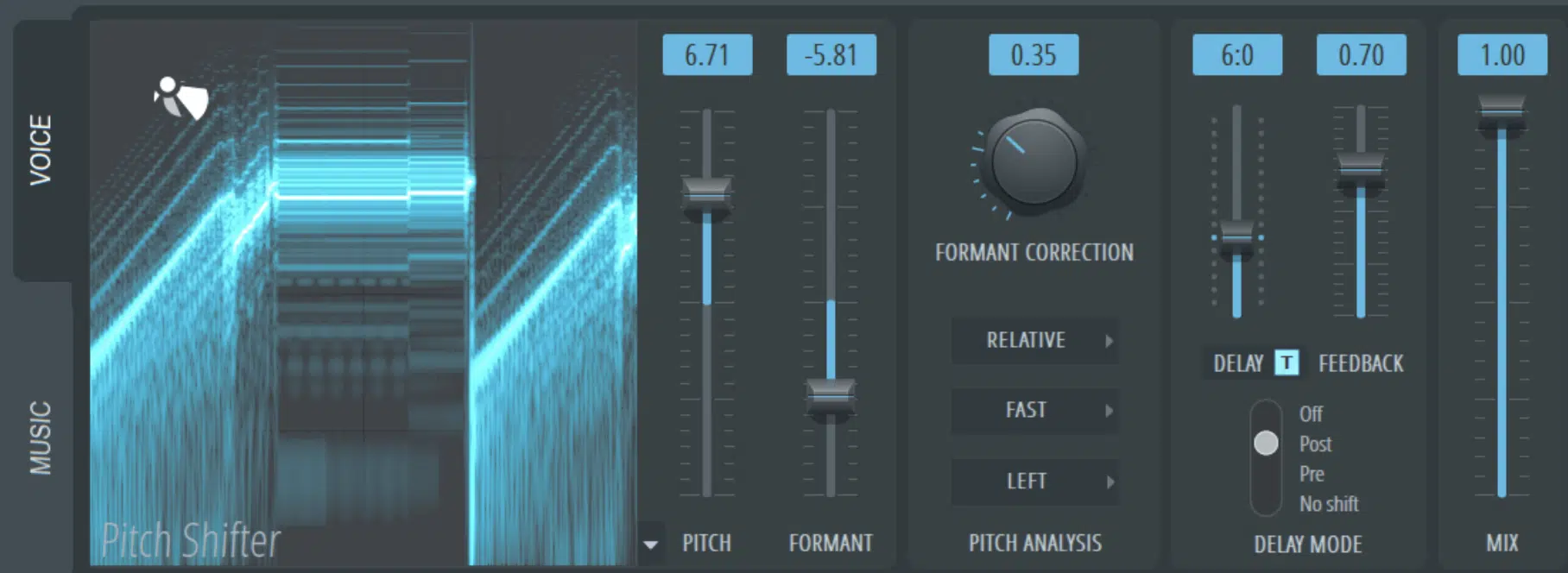
Pitch shifting, a super popular technique in music production, alters the pitch of vocals or instruments, which you have certainly heard in numerous chart toppers.
It raises or lowers the notes without impacting the timbre or the vocal formants of the overall sound.
This technique is pivotal in pitch correction.
It ensures your vocals align perfectly with the music’s key, or in creative applications like generating harmonies or modifying the pitch of samples for aesthetic purposes.
For example, adjusting the pitch of a lead vocal track up by a few semitones can make it stand out in the mix.
Or, using a pitch shifter on a bassline can drop its tone for a deeper impact.
It’s all about getting creative and experimenting to find unique and captivating sounds.
-
Formant Shifting
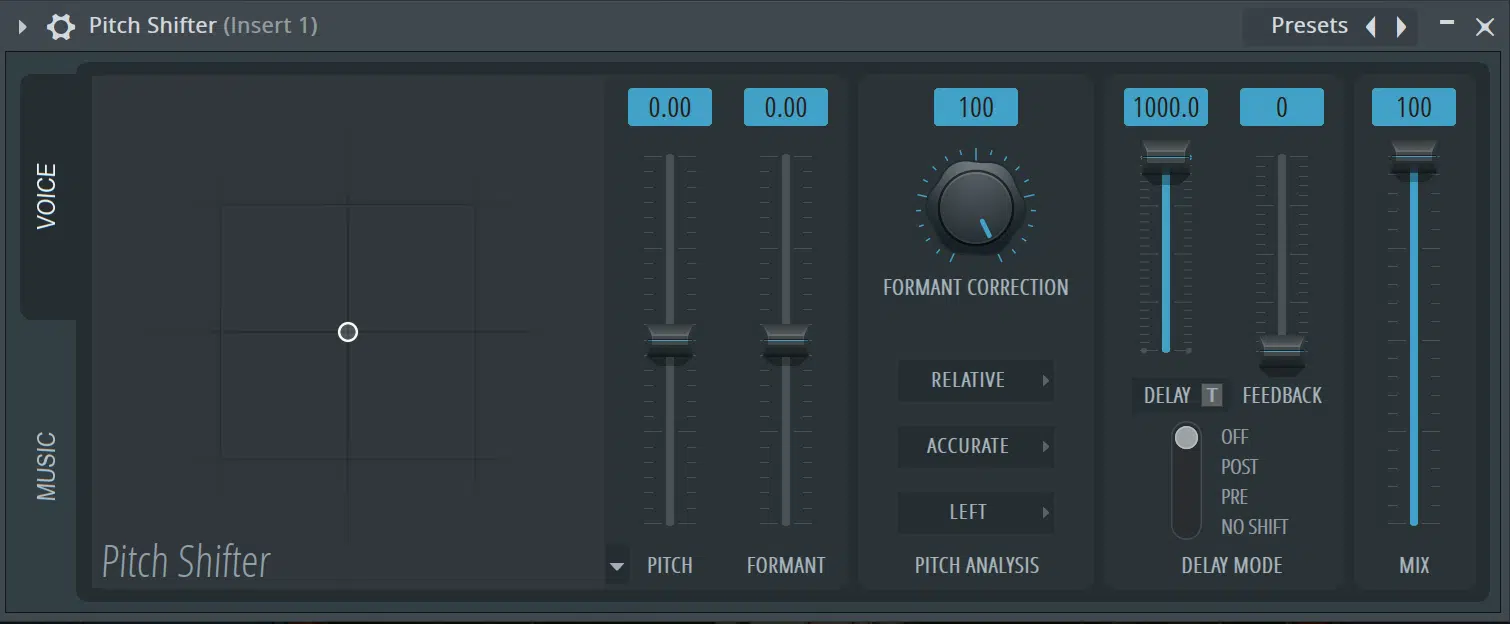
Formant shifting breaks down the texture and color of the sound, modifying the vocal tract’s resonances (vocal formants) without altering the pitch.
This manipulation of formants offer flexible control over the sound’s character.
Basically, it’s like a vocal transformer capable of changing a vocal’s perceived:
- Age
- Gender
- Species
- Etc.
It’s beneficial for adding that extra edge and appeal to your tracks, because vocal manipulation will always be super captivating.
As we covered, an example of formant shifting is transforming a male voice into a female voice or vice versa by adjusting the frequencies, while maintaining the original melody.
Formant shifting plugins, like Little Alterboy, provide an intuitive interface for these adjustments.
Little Alterboy lets you experiment with the vocal timbre and create unique vocal effects that defy natural vocal capabilities.
Through strategic application of formant shifting, you can achieve various vocal textures, from the ethereal to a robotic/tape machine vibe 一 making your tracks pop.
NOTE: The fundamental frequency, often referred to as the pitch of the voice, is the lowest frequency in a sound and serves as the base from which harmonics are generated.
You’ll need to know that moving forward.
-
Pro Tip
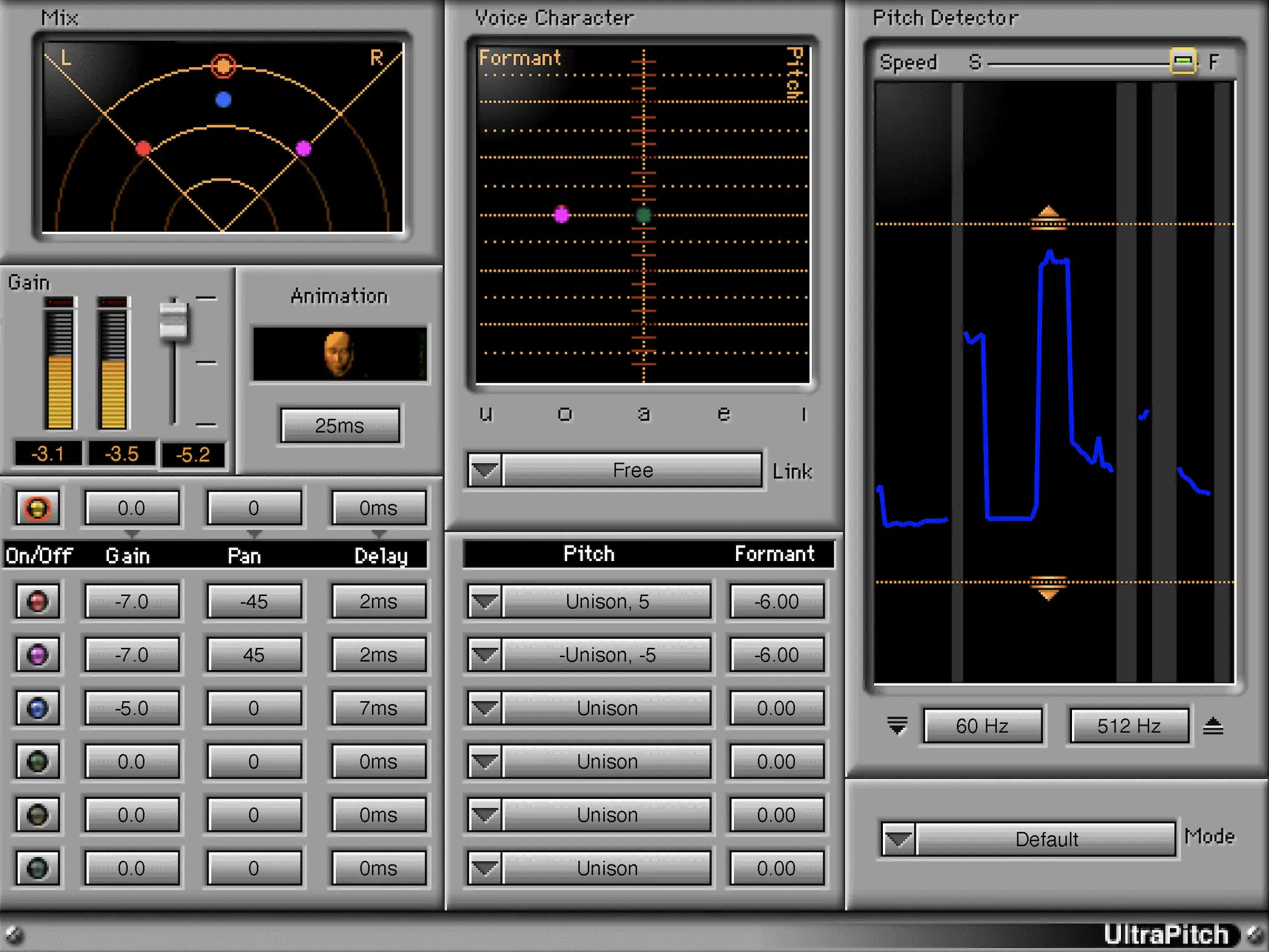
To preserve the natural tone of your vocals while using pitch shifters, consider leveraging a side-chain setting that dynamically adjusts the formants based on the incoming signal.
By carefully setting up your pitch shifter to subtly shift the formants in response to the melody changes, you can maintain the vocal’s original quality and texture.
Additionally, manipulating formants directly can offer more control over the vocal timbre.
It allows you to shift the character of the voice without losing its inherent natural tone.
This pitch-shifted approach ensures that the essential qualities of the human voice are retained, even as you creatively shift its pitch and timbre.
-
How the Human Vocal Tract Works: A Quick Rundown

The vocal tract, a key player in producing human voice sounds, acts as a resonating cavity for sound waves generated by the vocal cords.
Its shape and size (which can be altered by moving the tongue, jaw, and lips) determine the formant frequencies that characterize vowel sounds.
This understanding is crucial in music production and beat-making, particularly when applying formant shifting to vocals.
By manipulating these frequencies, you can shift the perceived characteristics of the voice, such as making it sound (without affecting the pitch):
- Fuller
- Thinner
- Higher
- Lower
This technique, when mastered, allows for the fine-tuning of vocal tracks to fit any musical genre or production style.
It can help you achieve those show-stopping vocal effects that make any song instantly become hot.
Pitch Correction vs. Formant Shifting
Pitch correction and formant shifting, while both vital tools in modern music production, can be used for specific purposes and functions.
Pitch correction, often associated with software like Auto-Tune, corrects any off-key note to the nearest true semitones.
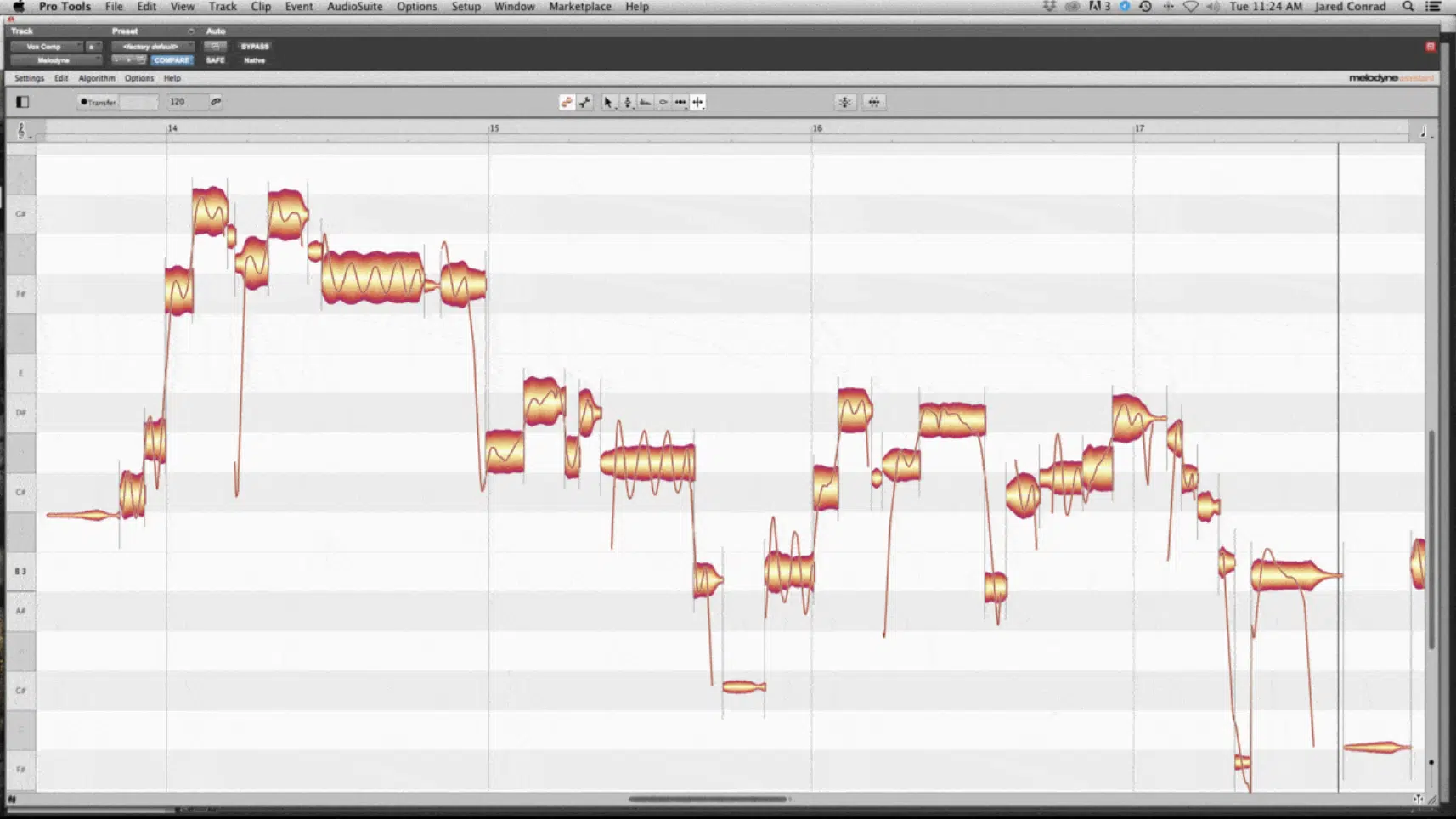
Pitch correction ensures your vocals are in tune with the music.
This technique is essential for cleaning up slight inaccuracies in vocal performances 一 making it key in producing polished, professional vocal tracks.
Pitch correction maintains the natural timbre and expressiveness of the voice while aligning the pitch with the musical key.
Formant shifting, on the other hand, dives into the texture and color of the voice.

It adjusts the human vocal tract resonances to change how the voice sounds without altering its pitch (Kanye West is a big fan of this one).
This can be used creatively to make a person’s voice sound crazy, scary, enchanting, etc. 一 vocal manipulation at its finest.
This is especially useful in genres like electronic music, where unique and otherworldly vocal effects are often desired.
The Best Formant Shifting Plugins for 2024

In 2024, several formant shifting plugins stand out for their quality, versatility, and ease of use, becoming must-haves for music producers of all kinds.
Little AlterBoy by Soundtoys is a renowned formant-shifting plugin for its simplicity and effectiveness in formants, shift/tone techniques, and flexibility.
It’s for sure a top runner, possibly the best right now.
It offers both pitch and formant shifting capabilities within a user-friendly interface 一 allowing for real-time note and timing manipulation.
This makes Little Alterboy perfect for live performances and studio work.
Aside from Little Alterboy, another notable plugin is Antares Harmony Engine EVO, which provides more comprehensive controls for:
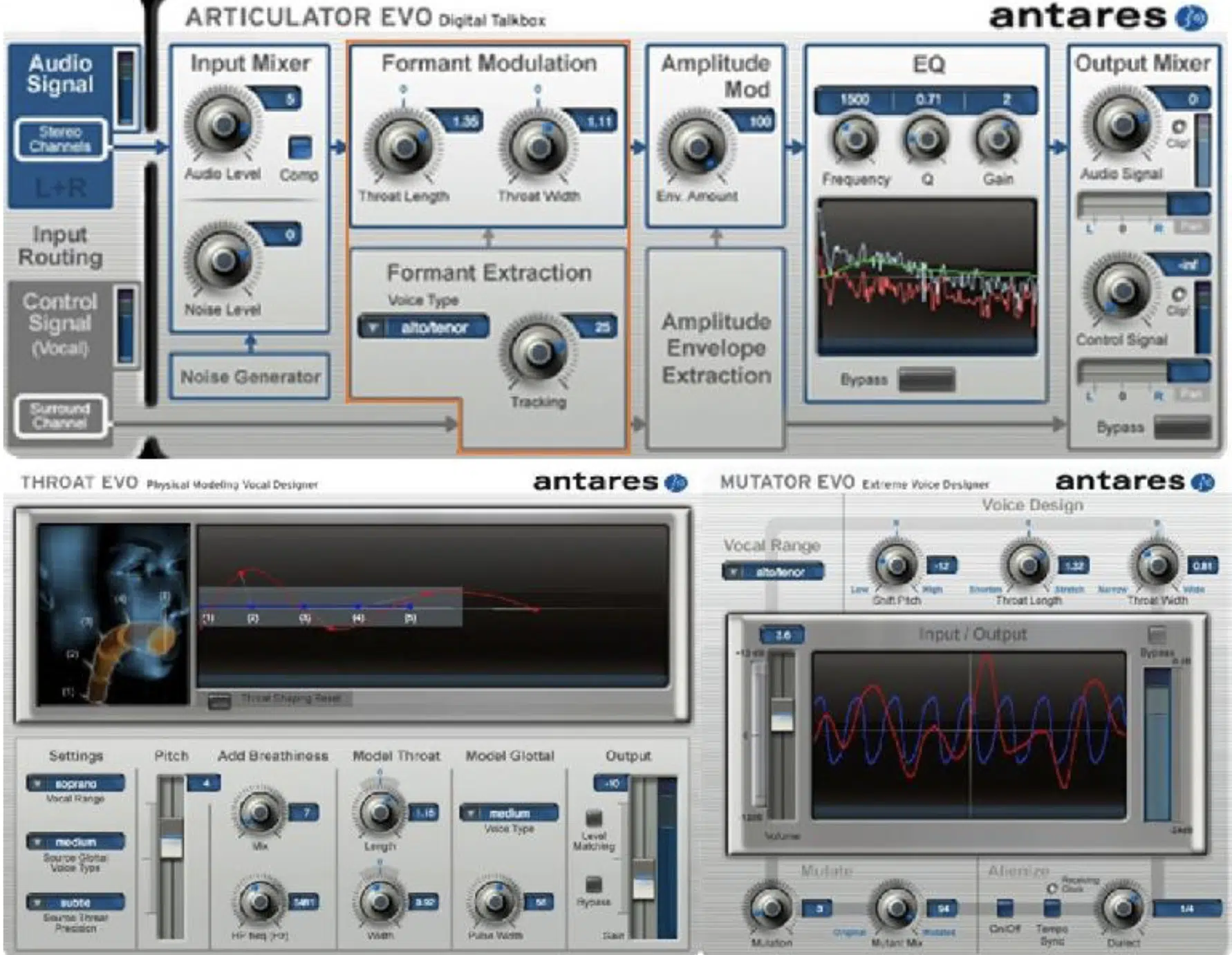
- Pitch correction
- Formant shifting
- Vocal harmonization
It’s for creating complex vocal layers and textures.
For those looking into advanced manipulation, iZotope’s Nectar 3 offers a suite of vocal processing tools, including formant shifting.
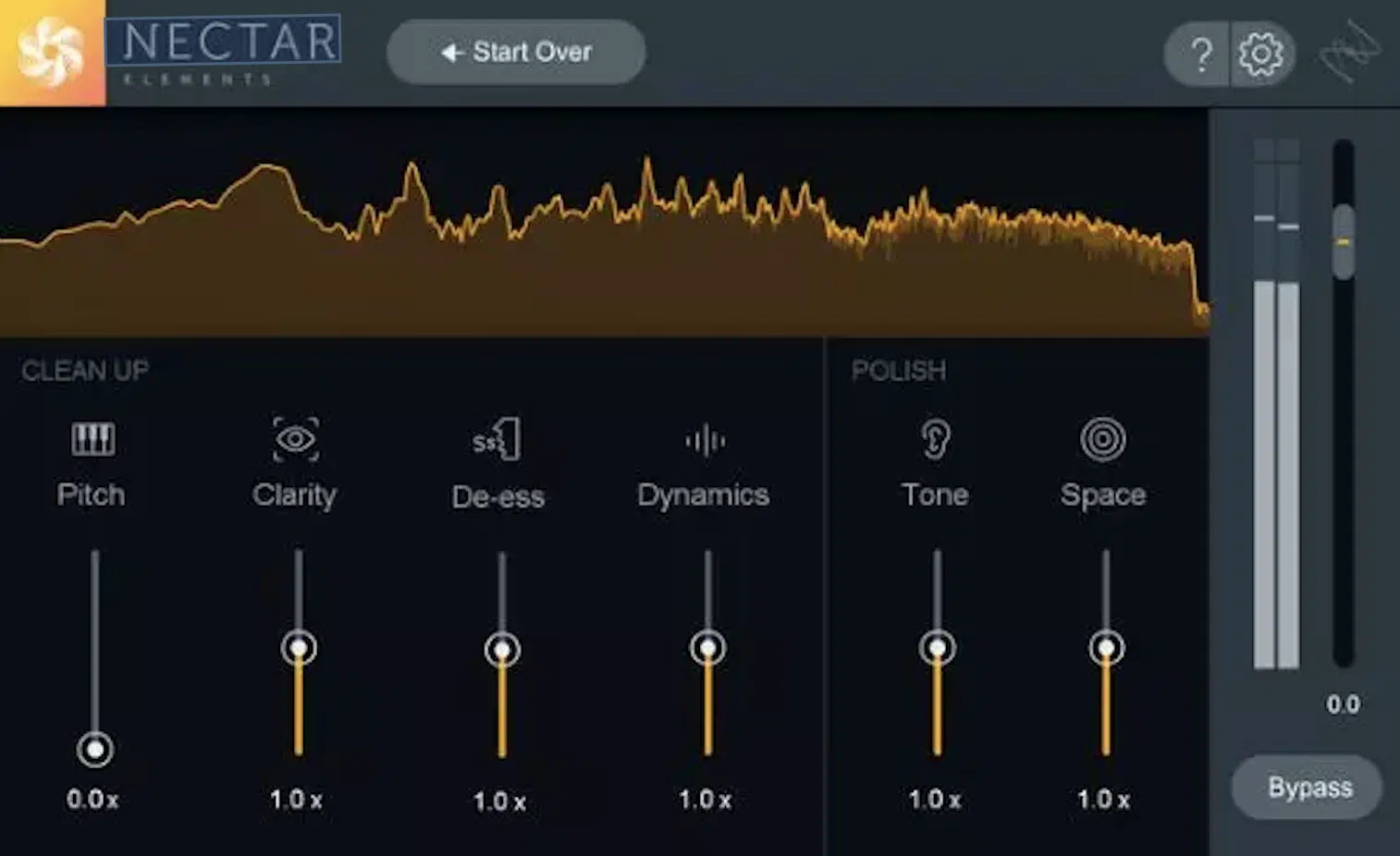
Its intelligent assistant can automatically analyze and apply the best settings for your vocal track/software instrument track, saving time and ensuring optimal results.
These plugins exemplify the advancements in digital audio technology, providing you with unparalleled control over vocal processing.
-
Pro Tip
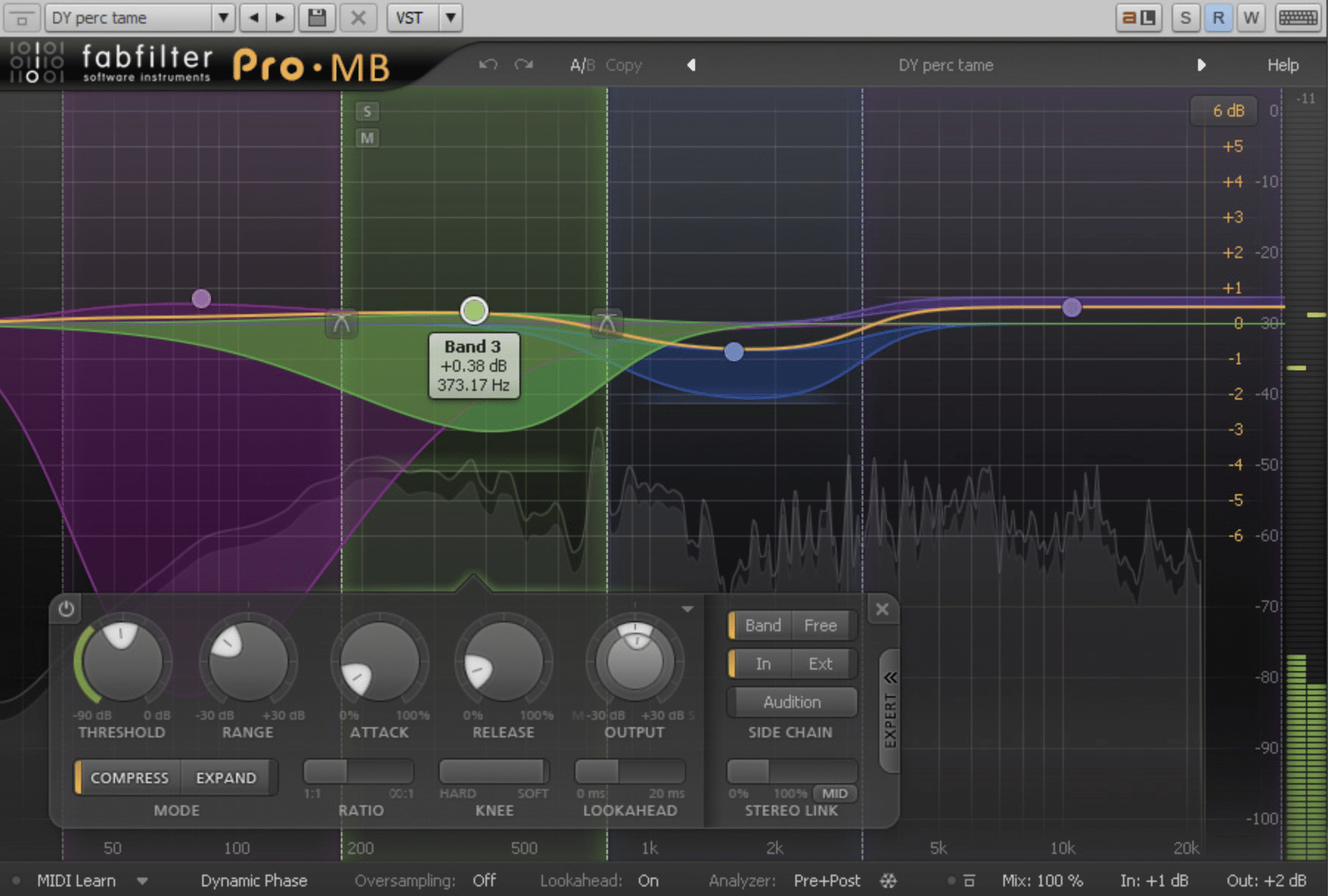
Effective vocal processing goes beyond basic editing, involving a blend of techniques to enhance the natural qualities of the voice while fitting it seamlessly into the mix.
Dynamic processing, using compression to even out the vocal performance’s volume, ensuring clarity and presence throughout the song.
If you’d like to learn all about vocal compressor settings, we’ve got you covered.
EQ is used to cut or boost frequencies to make the vocal blend well with other elements in the track.
Strategic use of reverb and delay can add space and depth 一 making the vocal sound more alive and fitting within the song’s spatial context.
Combining these techniques with formant shifting creates a rich, polished vocal track that captures the listener’s attention.
Creative Uses of Formant Shifting
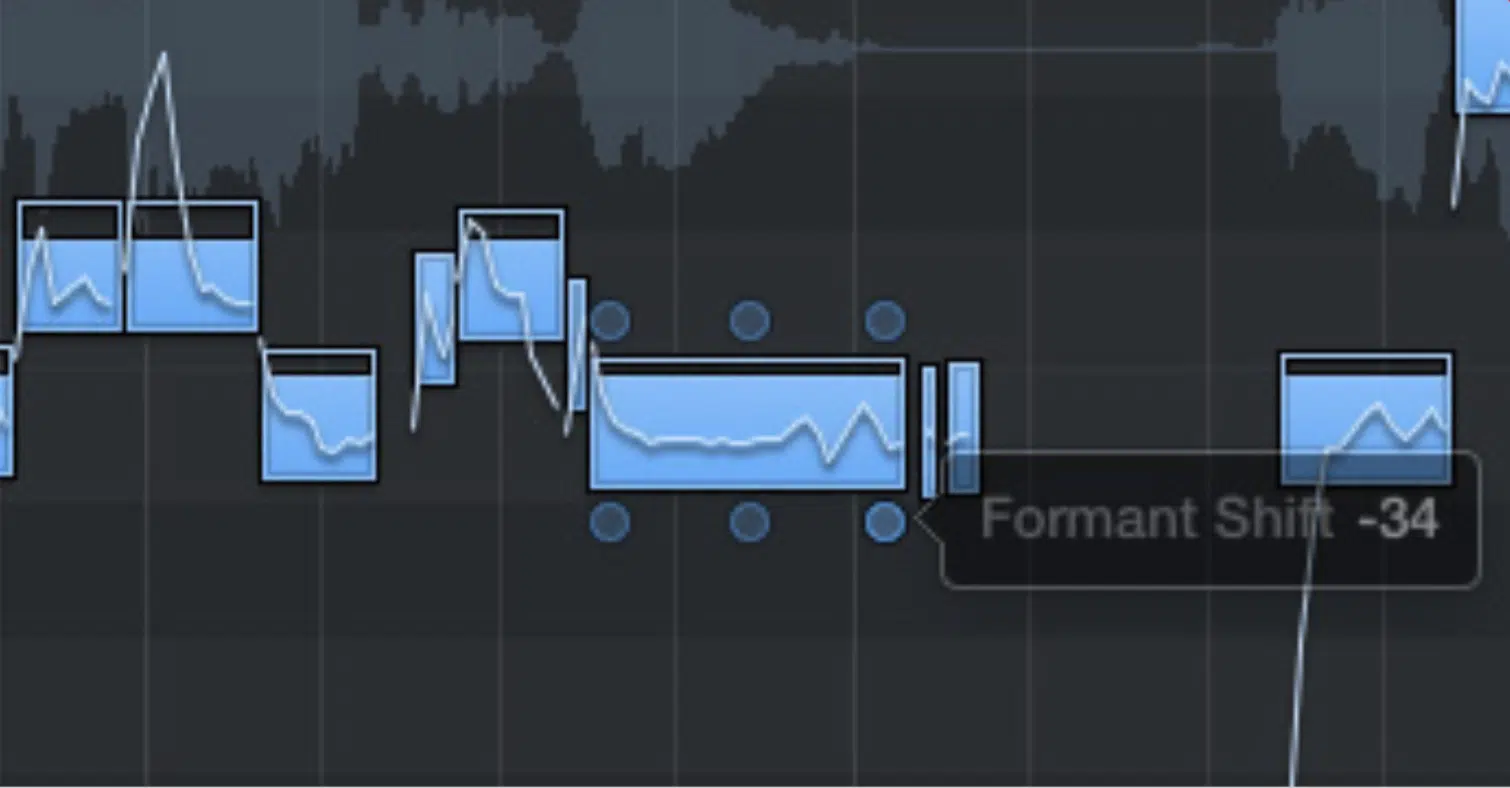
Formant shifting opens up a world of creative possibilities for music producers, allowing for the transformation of vocal tracks into unique sound elements.
One innovative use is creating vocal harmonies from a single vocal line.
By slightly adjusting the formant frequencies and pitch of duplicated tracks, you can simulate a harmonious ensemble, adding richness and depth to the song.
This technique is particularly effective in genres where vocal layers play a crucial role in the composition (like pop and R&B).
Another creative application is in sound design, where formant shifting can turn ordinary vocal samples into atmospheric pads, leads, or basslines.
By drastically shifting the formant frequencies and applying effects a vocal sample can be transformed, like:
Whether it’s into a lush, ethereal pad or a gritty, rhythmic element that adds a unique texture to the track, it’s all up to you.
For example, applying a generous amount of reverb to a formant-shifted vocal can create a spacious, atmospheric effect, perfect for ambient or cinematic tracks.
Similarly, adding delay can produce a rhythmic complexity that enhances the track’s texture and depth.
This technique is not only limited to electronic music but can also enhance film scores, ambient music, and experimental genres.
It provides a human touch to synthetic sounds.
For example, a haunting background vocal can be formant-shifted and layered beneath a lead vocal track to create a sense of depth and mystery or a single sung note can be transformed into a dynamic, pulsating drone that underpins an entire composition.
-
Using Formant Shifters
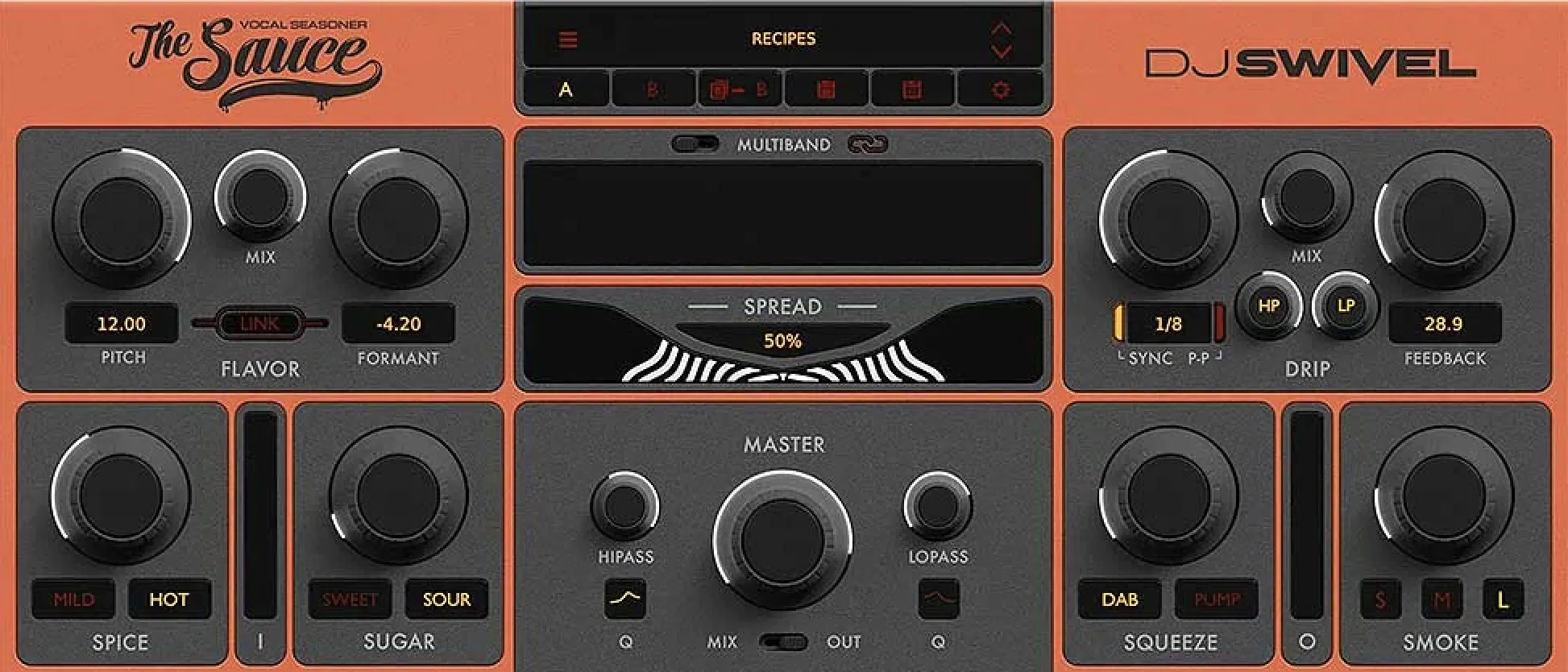
When incorporating formant shifters into music production, it’s crucial to approach the process with both creativity and precision.
Start by identifying the goal of formant shifting in your track, whether it’s to:
- Adjust the character of the vocal
- Blend it more seamlessly with other tracks
- Or, create entirely new sounds
For adjusting vocal character, subtle shifts can make a significant difference.
A slight increase in formant frequencies can make a vocal sound younger or more energetic, while a decrease can lend it a more somber or mature quality.
For blending sung vocals, formant shifting can be particularly useful in matching the timbre of background vocals with the lead vocal track.
By slightly altering the formant frequencies of the background vocals, you can create a more cohesive sound that supports the lead vocal without overshadowing it.
It’s a perfect blend that creates hype and captures people’s attention.
This technique ensures that all vocal elements in the mix work together harmoniously 一 enhancing the overall texture and dynamics of the track.
-
Best Techniques for Vocal Tuning
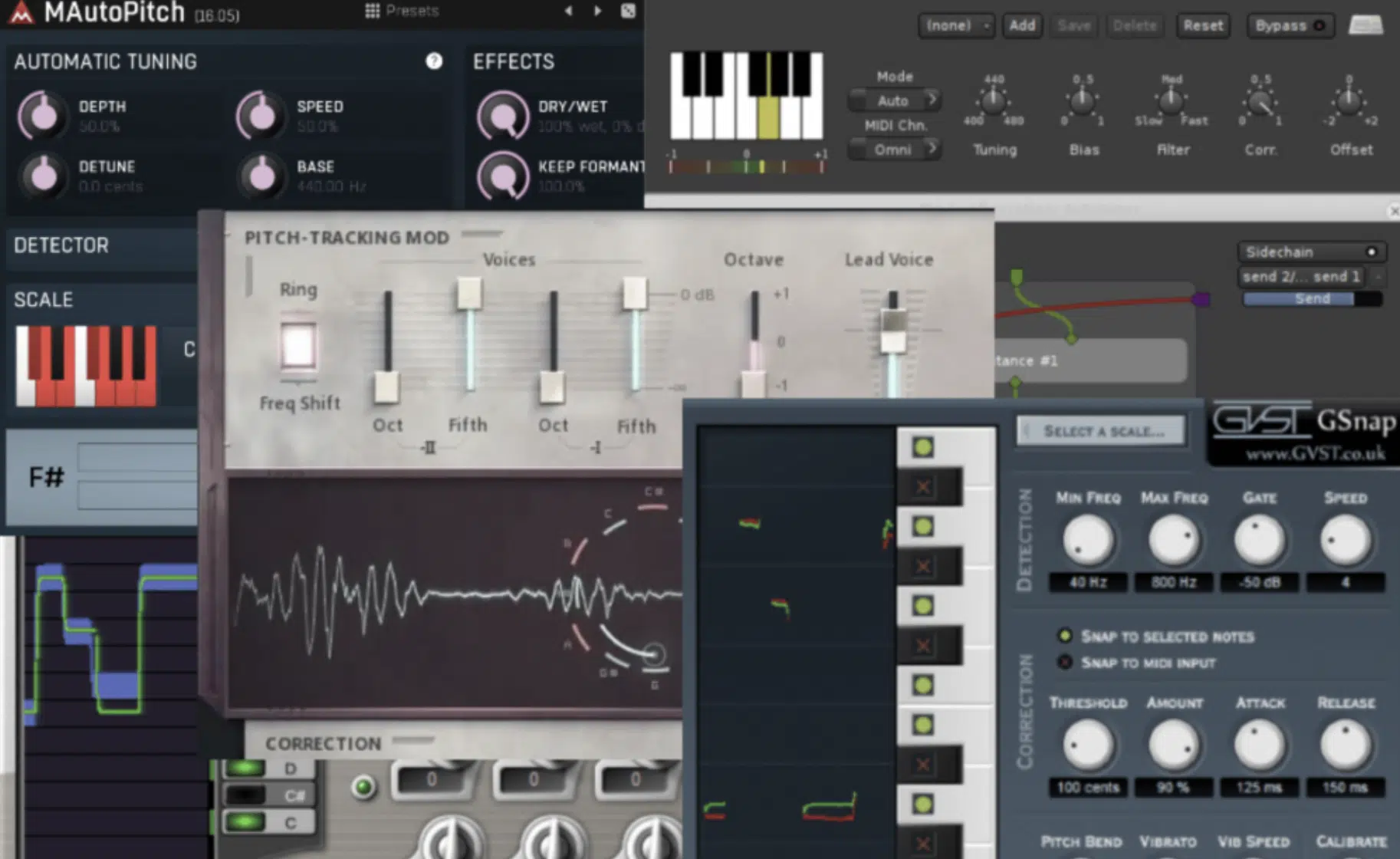
Vocal tuning is an essential aspect of modern music production, ensuring that vocals are pitch-perfect while retaining their natural expression and emotion.
One effective technique for vocal tuning involves the subtle use of Auto-Tune or similar pitch correction software.
You can set the retune speed to a moderate level to correct off-pitch notes without introducing the well-known ‘T-Pain effect’ (unless you’re aiming for that, of course).
This approach allows the vocal’s natural nuances to shine through while ensuring it aligns perfectly with the musical key, essential for a harmonious mix.
Another technique involves manual pitch correction, where each note is individually adjusted to the correct pitch.
This method offers maximum control and lets you decide exactly how much correction is applied and to which notes.
It’s ideal for fine-tuning vocal performances without losing the singer’s unique style.
Using a visual pitch editor tool can help identify off-pitch notes and make precise adjustments.
It makes sure the vocals contribute to the track’s emotional impact without distracting the listener with noticeable tuning artifacts.
-
Bonus: Utilizing MIDI-Controlled Effects for Precision
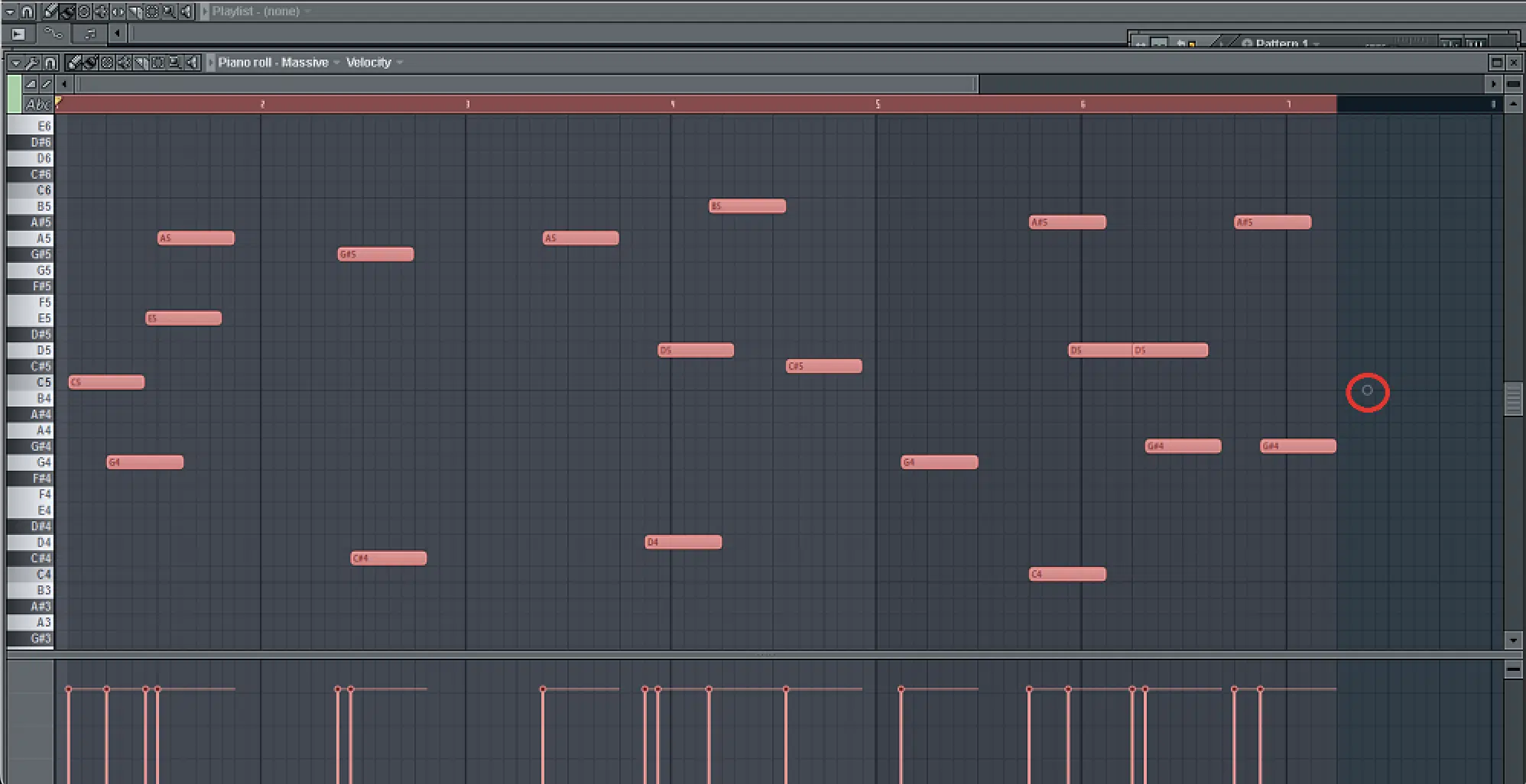
MIDI-controlled effects bring an additional layer of precision and creativity to vocal tuning and formant shifting.
By mapping MIDI notes to control pitch correction or formant parameters, you can perform real-time adjustments during playback or recording.
It adds dynamic expression to vocal tracks.
For instance, a MIDI-controlled effect can be used to create harmonies or add melodic variations to vocals 一 enriching the track’s texture and complexity.
MIDI mapping can control the intensity of formant shifting, which lets you apply subtle changes that follow the vocal melody or rhythmic pattern of the song.
This technique enables the creation of evolving vocal effects that respond to the music, providing a more integrated and cohesive sound.
Formant Shifting: Final Thoughts
Formant shifting can significantly alter the character and timbre of vocals, transforming ordinary tracks into extraordinary ones.
And, as you now know, you can use this technique to enhance vocal performances in your mixes and adjust vocal textures to better fit your artistic vision.
Plus, experiment with creative sound design that sets your music apart.
To help you put these newfound skills into practice, you’ll need the most highly-renowned, show-stopping vocal samples around…
That’s where this free Vocal Samples pack comes in.
It contains 20 free vocal samples that are the missing pieces to your tracks, and you didn’t even know it.
These vocals are styled after the biggest hit songs in modern music, offering professional, mind-blowing, and super versatile elements for your tracks.
With these samples, you can practice formant shifting techniques, experiment with different vocal effects, and explore the full potential of your music production software.
Equipped with the knowledge of formant shifting and these high-quality vocal samples, you have everything you need to create legendary music.
The ability to manipulate and transform vocals opens up a world of possibilities, allowing you to craft sounds that capture the imagination and resonate with listeners.
So dive in, experiment with your vocal tracks, and let your creativity lead the way to groundbreaking tracks.
Until next time…







Leave a Reply
You must belogged in to post a comment.